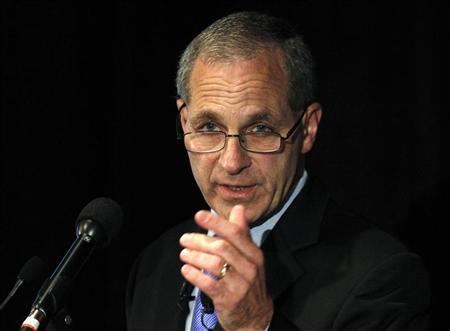(Reuters) – A devastating report blaming Penn State and its top officials for covering up the sexual abuse of children by former assistant football coach Jerry Sandusky could increase the university’s exposure to potentially huge civil damages, legal experts say.

Penn State, which reported $4.6 billion of revenue in its fiscal year ended in June 2011 and has an endowment topping $1.8 billion, has already been sued by at least one of Sandusky’s accusers and others are expected to initiate litigation as well.
The 267-page report, overseen by former FBI Director Louis Freeh, will give them new ammunition to hold the university liable, said Andrew Stoltmann, a civil litigator based in Chicago. In other sex abuse scandals, notably the one that rocked the Catholic Church, such damning evidence of efforts to cover up wrongdoing has been hard to come by.
“You don’t typically see a road map like this provided,” said Stoltmann, who is not involved in the case.
Sandusky, 68, was convicted last month of sexually abusing 10 boys over 15 years and faces up to 373 years in prison. He filed his intent to appeal the conviction on Thursday.
The Freeh report, commissioned by Penn State, concluded that the school’s leaders, including former President Graham Spanier and the late famed football coach Joe Paterno covered up years of abuse by Sandusky in an effort to preserve the university’s reputation.
In response to the Freeh report, Karen Peetz, chair of Penn State’s board of trustees, said the board “accepts full responsibility for the failures that occurred.”
The report expanded on grand jury findings released in November that led to prosecutors filing sex abuse charges against Sandusky, as well as charges of perjury and failure to report suspected child abuse against former athletic director Tim Curley and finance official Gary Schultz.
One of Sandusky’s accusers, Travis Weaver, used those grand jury findings as the basis for his November lawsuit against the university. Many of the claims were for negligence, which is a relatively easy claim to prove in court, and the Freeh report could help bolster stronger claims, said Marci Hamilton, a lawyer for Weaver.
“Intentional and reckless torts are harder to prove, but this report seems to indicate that the university engaged in both intentional and reckless disregard for the welfare of children,” said Hamilton.
Hamilton cautioned that the report was not the final chapter of Penn State’s liability. She noted that the report did not address the years between 1977, when Sandusky established the Second Mile, a charity he allegedly used to find his victims, to 1998.
“Pedophiles don’t start abusing midlife,” said Hamilton.
Nevertheless, she said the strong conclusions and evidence included in the Freeh report could open the university up to huge punitive damages, which juries can grant plaintiffs in an effort to deter others from similar conduct. Punitive damages can be multiples of compensatory damages that a jury awards.
SEVEN-FIGURE SETTLEMENTS?
Allowing a victim’s case against Penn State to reach a jury would be dangerous for the university, suggested Paul Neale, CEO for DOAR Litigation Consulting, which provides litigation consulting services to universities. He said juries hold universities to high standards of care when victims are harmed on their premises.
“My sense is that Penn State would have to consider a valid settlement strategy,” said Neale.
It is difficult to know exactly what Penn State’s exposure is. Based on previous settlements involving the Catholic Church, Stoltmann said the university would have to shell out more than $100 million.
“For the credible claims, I think they’ll be paying out seven-figure amounts,” said Stoltmann.
After Sandusky was convicted last month, Penn State issued a statement indicating its plans to invite victims of Sandusky’s abuse to participate in settlement discussions.
Some experts in sex abuse cases have suggested that Penn State should set up a victims’ compensation fund that would be administered by an independent party and allow plaintiffs to settle claims quickly and privately. John Culhane, a professor at the Widener law school, said the Freeh report gave the university more incentive to settle cases privately.
“The alternative would be getting slammed not only with compensatory damages but also punitive damages,” said Culhane.
Penn State has not announced the creation of a victims’ compensation fund. It is also not clear if any of the victims would participate in it.
Hamilton, an attorney for victims, said that victims’ funds had historically been inadequate. She also noted that any settlement discussions would have to take into account each victim’s circumstances.
“There are varying degrees of abuse and the length of time of the harm,” said Hamilton.
(Reporting by Andrew Longstreth; Editing by Peter Cooney)





